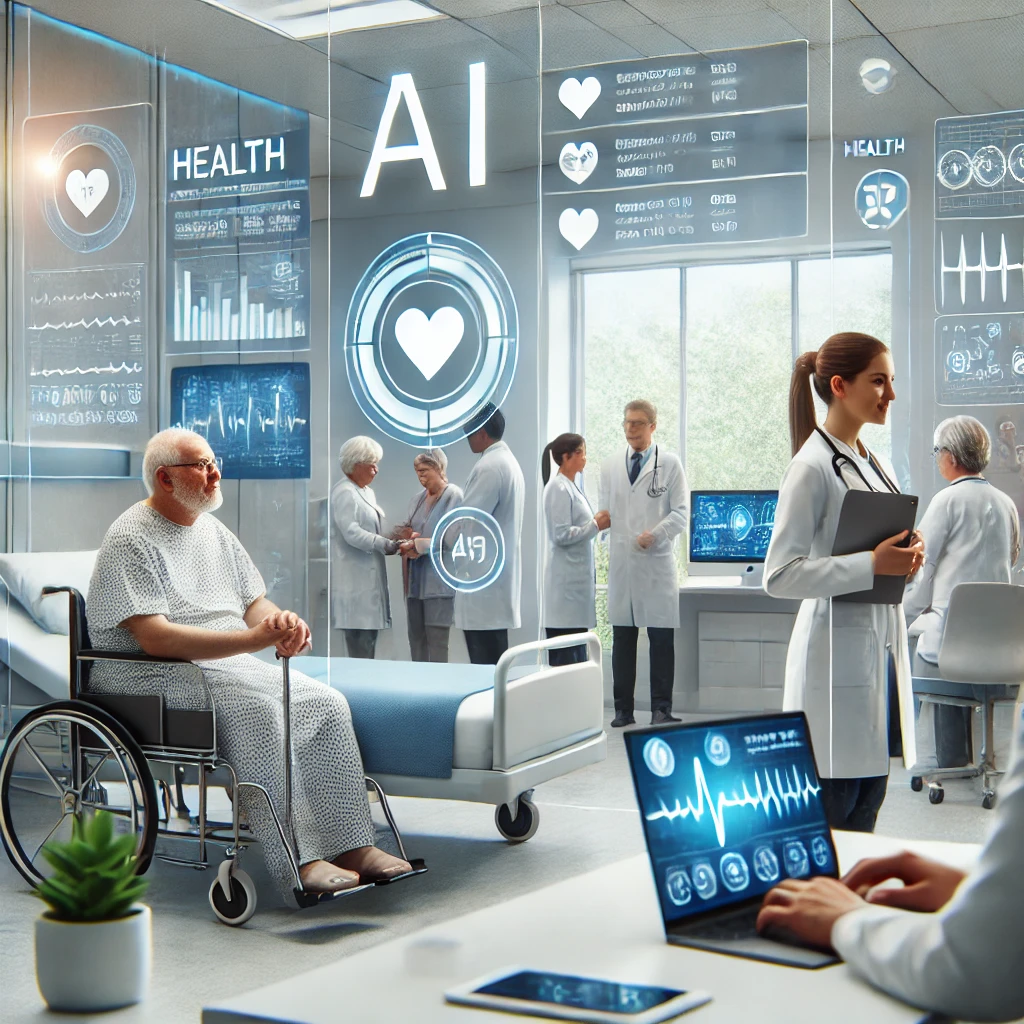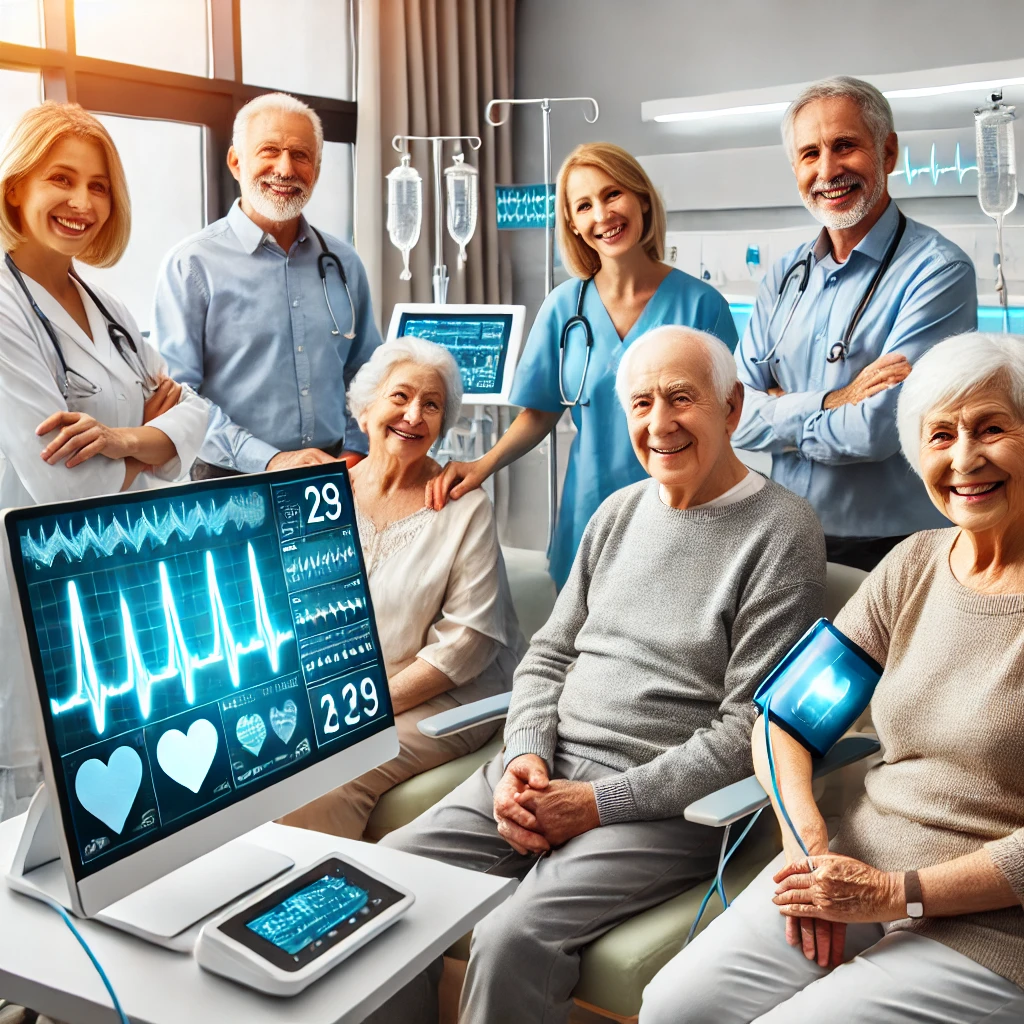The Importance of Early Disease Detection
Late diagnosis of diseases can have severe and often dire consequences, leading to complications, prolonged treatments, and in some cases, death. Many serious illnesses, such as cancer and cardiovascular diseases, exhibit subtle symptoms in their early stages that can be easily overlooked without proper and continuous monitoring. For instance, the early signs of cancer might include minor changes in skin appearance, unexplained weight loss, or persistent fatigue, which are often overlooked until the disease progresses to a more critical stage. Similarly, early symptoms of cardiovascular diseases, such as mild chest discomfort or shortness of breath, can be mistaken for less severe conditions, delaying vital intervention.
Fortunately, advancements in healthcare technology are making significant strides in transforming how we detect diseases early. These innovations are crucial in bridging the gap between symptom onset and diagnosis, thereby improving patient outcomes. Wearable devices, for instance, have become essential tools in health monitoring. These gadgets, such as smartwatches and fitness trackers, continuously measure vital signs, including heart rate, blood pressure, and blood oxygen levels. This continuous stream of data can provide early warning signs of potential health issues, prompting timely medical consultations.
Telemedicine, another breakthrough in healthcare, has revolutionized access to medical care. It allows patients to seek professional medical advice remotely, ensuring that even minor health concerns are addressed promptly. This accessibility is particularly beneficial for individuals in remote areas or those with mobility issues.
AI-powered diagnostics are also playing a pivotal role in early disease detection. Artificial intelligence and machine learning algorithms can analyze vast amounts of medical data to identify patterns and anomalies that might indicate the early onset of diseases. For example, AI can enhance radiology by identifying early signs of cancer in imaging scans with greater accuracy and speed than traditional methods.
The integration of advanced healthcare technologies is crucial in mitigating the risks associated with late diagnosis. These tools not only facilitate early detection but also empower individuals to take proactive steps in managing their health, ultimately saving lives and improving the quality of care. In this article, we’ll be taking a dive into how healthcare technology can help with early disease detection and what we can expect in the future.

Wearable Technology and Health Monitoring
Wearable technology, such as smartwatches and fitness trackers, has surged in popularity, revolutionizing the way we monitor our health. These devices have transcended their initial roles to become vital health monitoring tools, capable of tracking a wide range of vital signs, including heart rate, blood pressure, and blood oxygen levels. The continuous tracking feature of wearables provides real-time data that can alert users and healthcare providers to potential health issues, enabling timely intervention and potentially life-saving measures.
One of the most significant benefits of wearable technology is its ability to detect abnormal heart rhythms. For instance, the Apple Watch has been instrumental in identifying cases of atrial fibrillation (AFib), a condition that can lead to stroke if left untreated. Studies have shown that the Apple Watch’s heart rate sensor can accurately detect AFib, prompting users to seek immediate medical consultation. This early detection can be critical, as timely treatment of AFib can significantly reduce the risk of stroke and other complications.
In addition to heart rate monitoring, wearables equipped with blood pressure sensors, such as the Omron HeartGuide, provide users with valuable insights into their cardiovascular health. High blood pressure is often called the “silent killer” because it typically presents no symptoms until it causes severe health issues. Continuous blood pressure monitoring allows for early detection and management of hypertension, thereby preventing complications like heart attacks and strokes.
Blood oxygen level monitoring, another feature available in modern wearables, gained particular attention during the COVID-19 pandemic. Devices like the Fitbit Sense and Garmin Venu can track blood oxygen saturation (SpO2) levels, providing early indicators of respiratory issues. This feature is especially beneficial for individuals with chronic respiratory conditions or those recovering from illnesses affecting lung function.
AI and Machine Learning in Diagnostics
Artificial intelligence (AI) and machine learning (ML) are at the forefront of a revolution in medical diagnostics, providing tools that can analyze vast amounts of medical data to identify patterns and anomalies indicative of early disease onset. These advanced technologies are particularly transformative in the field of radiology, where AI-powered imaging tools are proving to be more accurate and efficient than traditional diagnostic methods.
For example, AI algorithms are capable of analyzing radiology scans to detect early signs of cancers, such as breast cancer, lung cancer, and melanoma. Studies have shown that AI systems can identify cancerous lesions in mammograms with a level of accuracy comparable to that of expert radiologists. In some cases, these AI tools have even outperformed human specialists, particularly in identifying subtle changes that might be missed during manual reviews. This early detection is crucial, as it allows for earlier and less invasive treatment options, significantly improving patient outcomes.
Beyond cancer detection, AI and ML are also being utilized to diagnose a wide range of other conditions. For instance, AI algorithms can analyze electrocardiograms (ECGs) to detect irregular heartbeats and other cardiac abnormalities that might indicate underlying heart disease. Similarly, AI-driven diagnostic tools are being developed to screen for diabetic retinopathy by examining retinal images, thus helping to prevent vision loss in diabetic patients through early intervention.
Moreover, AI’s ability to continuously learn and improve from new data sets ensures that diagnostic accuracy will only increase over time. This continuous improvement cycle is facilitated by the integration of AI systems into electronic health records (EHRs), where they can access a wealth of patient data to refine their predictive capabilities. The integration of AI into EHRs also streamlines the diagnostic process, reducing the time and effort required by healthcare providers to diagnose and treat patients.

Telemedicine and Remote Patient Monitoring
Telemedicine has become an indispensable component of modern healthcare, particularly highlighted during the COVID-19 pandemic. This technology allows patients to seek medical advice and consultations from the comfort of their homes, significantly reducing the risk of exposure to infectious diseases. Telemedicine bridges the gap between patients and healthcare providers, offering convenience and accessibility that traditional in-person visits often lack.
One of the primary benefits of telemedicine is its ability to facilitate continuous monitoring of chronic conditions. Remote patient monitoring systems, equipped with devices that track vital health metrics, have revolutionized chronic disease management. For instance, diabetic patients can use continuous glucose monitors (CGMs) to track their blood sugar levels throughout the day. These devices automatically send data to healthcare providers, allowing for real-time monitoring and prompt intervention if necessary. This continuous flow of information helps in maintaining optimal glucose levels and preventing severe complications.
Similarly, patients with cardiovascular conditions benefit immensely from remote monitoring. Devices that measure heart rate, blood pressure, and even electrocardiograms (ECGs) can transmit data directly to cardiologists. If any irregularities are detected, healthcare providers can immediately contact the patient and suggest necessary actions, potentially averting life-threatening events such as heart attacks or strokes. According to a study published in the National Institutes of Health, remote monitoring can reduce heart failure-related hospitalizations by up to 48% .
Moreover, telemedicine extends its benefits to those living in remote or underserved areas, where access to healthcare facilities is limited. Virtual consultations ensure that these patients receive timely medical attention without the need for extensive travel. This accessibility is particularly beneficial for elderly patients and individuals with mobility issues.

The Future of Predictive Health Technology
The future of healthcare technology is incredibly promising, particularly in the realm of early disease detection. Innovations in genomics, personalized medicine, and advanced data analytics are at the forefront of this transformation, enabling more precise and proactive health monitoring. Genomic technology, for instance, allows for the identification of genetic predispositions to various diseases, enabling personalized preventive strategies tailored to an individual’s genetic makeup.
Personalized medicine, which tailors treatment plans to the unique genetic profile and health history of each patient, is becoming increasingly sophisticated. This approach not only enhances treatment efficacy but also minimizes adverse effects, significantly improving patient outcomes. Advanced data analytics play a crucial role in this by processing and interpreting vast amounts of health data to predict disease risk and progression.
As these technologies continue to evolve, the hope is that early detection will become a routine part of healthcare, substantially reducing the burden of disease and saving countless lives. The integration of these advanced tools into everyday healthcare practices marks a new era in medical science, where the focus shifts from treating illnesses to preventing them. By identifying potential health issues before they fully develop, healthcare providers can intervene earlier, leading to better health outcomes and a higher quality of life for patients. This proactive approach not only benefits individuals but also alleviates the overall strain on healthcare systems.
In conclusion, the future of predictive health technology holds immense potential for revolutionizing healthcare. By embracing these advancements, we can look forward to a time when early disease detection and prevention become the norm, transforming healthcare from a reactive to a proactive system.
Special thanks to Nids for the inspiration behind this article



Good info. Lucky me I reach on your website by accident, I bookmarked it.
I’ve read a lot of posts on this topic, but this one actually feels useful. Bookmarking so I can come back to it later.
Oh wow technology has evolved greatly
It’s going to evolve even more
This connects the technical side of AI with patient care
Too many ethical considerations to consider with this currently
This is a complex topic, especially right now
Will AI replace Radiologists?
– Fellow radiologist who totally isn’t worried